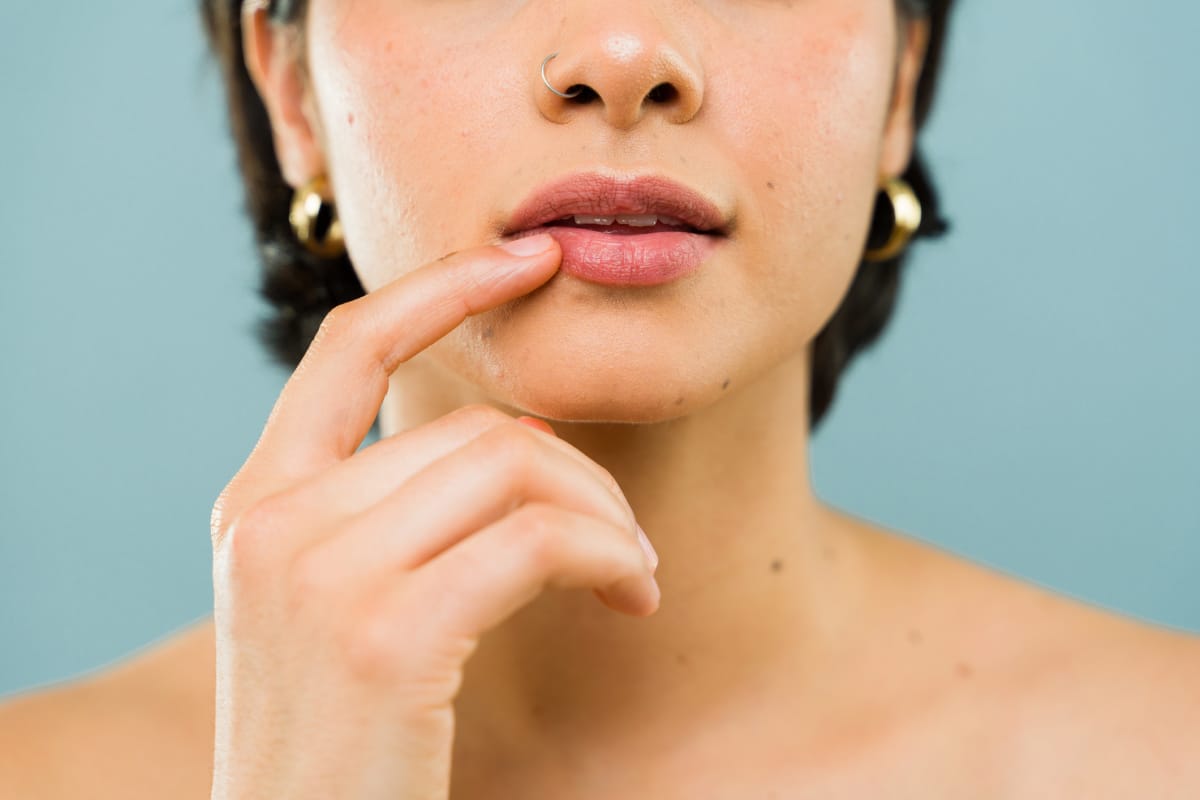
Today, Dr. Mark of Mountain Radiance in Asheville is sitting down and answering some common questions we get about BOTOX and fillers from our med spa patients.
So what exactly is Botox?
Botox is a brand name for onabotulinum toxin A, which is a purified form of a protein produced by the clostridium botulinum bacteria.
It is injected into muscles to temporarily disrupt the connection between the nerve and muscle, to prevent the underlying muscle activity.
In aesthetic medicine, we can use this to treat the muscles of the face that cause undesirable wrinkles.
If you want to get technical, and I do, it’s targeting the SNAP-25 protein which inhibits the release of the neurotransmitter acetylcholine and thereby prevents muscle contraction.
This can decrease the appearance of wrinkles or even decrease the size or bulk of the muscle to improve appearance. On average, most people will notice effects at around 3 days and maximal effects at 2 weeks.
Eventually, your body grows new connections from the nerve to the muscle to re-establish the muscle contraction. On average, this process takes about 3-4 months. When the muscle activity comes back, so can the wrinkles, and you’ll need another treatment to recreate the effects.
Over the course of multiple treatments, and with the decreased stress on the skin from preventing repeated muscle contraction, new wrinkles are less likely to form and existing wrinkles start to fade.
What are fillers?
OK, this is actually a huge question because there are a ton of different products and different TYPES of products that are used as dermal fillers.
Fillers can be used in different locations and layers of the face and body to enhance features like cheeks and lips or replace volume that naturally gets lost with age. Superficial wrinkles may have a softer filler injected just below the epidermis, or the most superficial layer of the skin, while in order to work on cheeks or jaw, we inject a firmer filler just above the surface of the bone.
The most commonly used fillers today are Hyaluronic Acid fillers. You may have heard of product families like Juvederm, Restylane or Belotero which are all variations of injectable Hyaluronic Acid. In our practice, we use Juvederm for several reasons that we can go into in future videos.
Hyaluronic Acid itself is a naturally occurring sugar chain called a glycosaminoglycan. It lives in the connective tissue and helps to support the skin cells collagen and elastin. The average molecule of Hyaluronic Acid in the skin lasts only about a day before being broken down and rebuilt. It lasts longer in other tissues, up to about 3 weeks in cartilage.
In order to prevent the fillers from being degraded at the same time, the chains of hyaluronic acid are chemically crosslinked, or meshed together, in order to stabilize them and make them last longer.
This hyaluronic acid mesh starts to get incorporated into your natural extracellular matrix after several days and essentially becomes a part of your body enhancing your facial features. Because your body incorporates the filler, you likely won’t be able to feel it after several weeks and wouldn’t even know it’s there unless you compared before and after pictures.
Not only does the hyaluronic acid cause volume by the molecule itself, since it attracts water, it will actually cause increased volume by pulling water into the tissue. It will also cause new collagen to form from the pressure it puts on surrounding cells.
All good things must come to an end, however, and eventually your body is able to overcome the cross linking and breakdown the dermal filler mesh work over time. Depending on the filler, this can take months to years.
The hyaluronic acid gets broken down by your body’s natural enzymes from the longer sugar chains into the smaller sugar molecules and the volumizing effects start to fade. We can also help to dissolve filler that’s causing an undesirable effect using an injection of the same hyaluronidase enzyme and break it down over the course of minutes to hours, rather than the months to years that it will take your body.
What is the difference between Botox and Filler?
I find that there is some confusion for people new to aesthetics as far as the differences between the two main services that most med spas will provide: Botox and filler.
As far as the similarities between BOTOX and filler: both are injectable treatments, meaning that they are delivered underneath the surface of the skin using a syringe and needle. Both are used to improve appearances, typically by reducing the appearance of superficial wrinkles in the skin. However, Botox doesn’t plump the skin to reduce wrinkles, while filler will.
Botox is a neurotoxin, similar to Dysport or Xeomin. It works to weaken the contraction of target facial muscles and thereby reduce the pull of these muscles across the skin which can cause wrinkles. See, the face is actually unique in that, rather than having most of the muscles moving bones like how your biceps flexes your arm, there are a number of muscles that attach to the skin and cause facial expression.
Typically, we will target muscles above or around the eyes, like the muscles that cause the frown lines and forehead wrinkles that are associated with aging or negative emotions. We can target some select muscles in the lower face, but this area gets very delicate. This is because not only are these muscles causing facial expression, but also involved with other important functions like speech and chewing. Additionally, your smile is a very important facial expression that we want to preserve, even if those muscles are causing some wrinkles. When we do target muscles in the lower face, we are typically using much lower doses in very selective areas.
Filler is typically going to be a hyaluronic acid product, such as Juvederm or Restylane. It works to add volume to the skin to correct wrinkles, or augment facial features like lips and cheeks. When we’re talking about wrinkles, filler is great to treat some of the lower face lines that Botox can’t, such as the folds from the nose to the mouth or from the mouth down to the jaw. Many times, these lines can be caused or worsened by age-related loss of fat or bone in the cheek and chin regions and we will recommend treating these areas first to recreate the backbone facial structure before going after some of the more superficial areas.
As far as duration, Botox will work on the neuromuscular junction for 3-4 months while filler will stay in the skin for 9 months to 2 years or even longer to provide volume. Both are temporary treatments though and require repeat treatments over time to keep the same effects although Botox does work to help prevent wrinkles from forming in the first place.
Learn more about BOTOX & fillers at Mountain Radiance in Asheville
When you’re ready to learn how BOTOX and fillers can work for you, Dr. Chandler and our skilled nurse injector Sarah are ready to help. Schedule your personal consultation by calling our Asheville med spa at (828) 627-2711 or contacting us online today.


